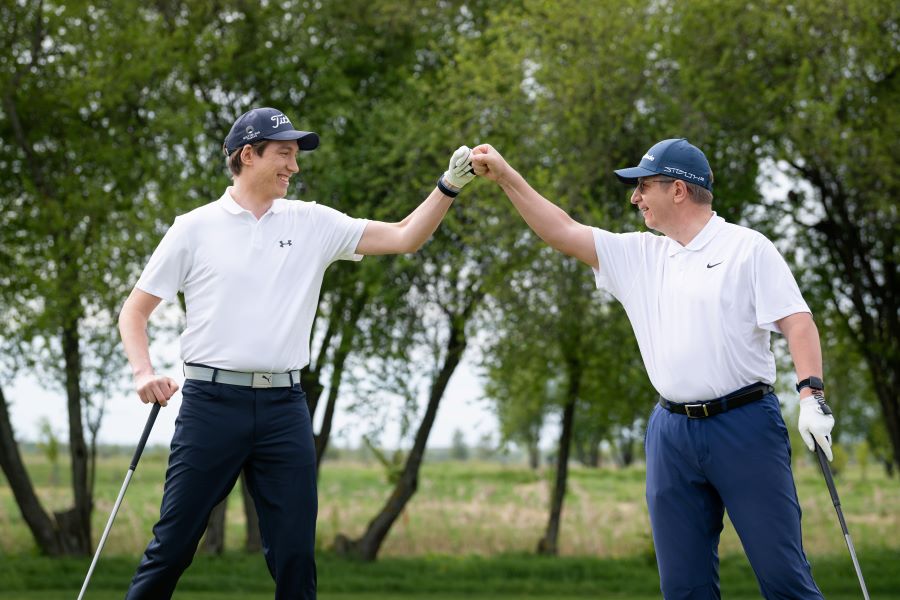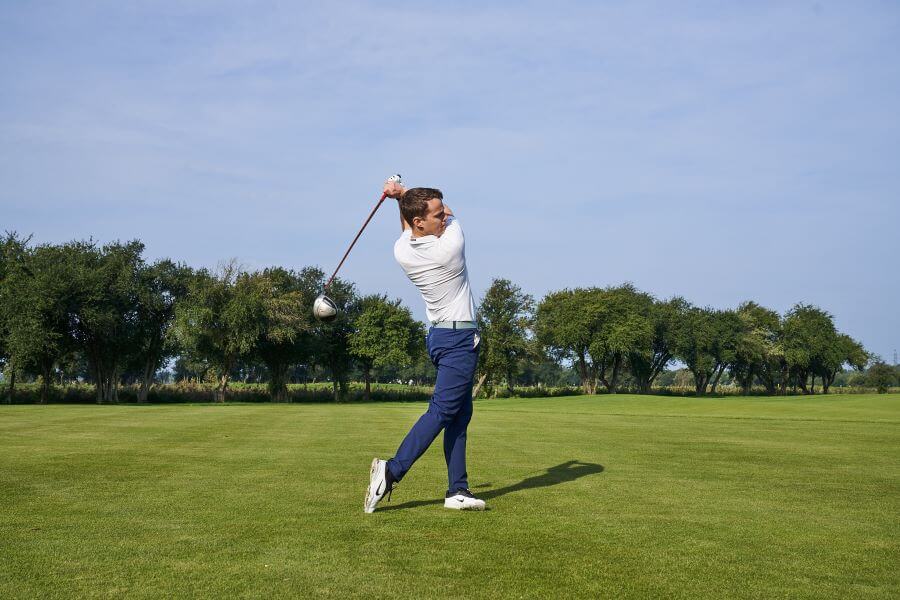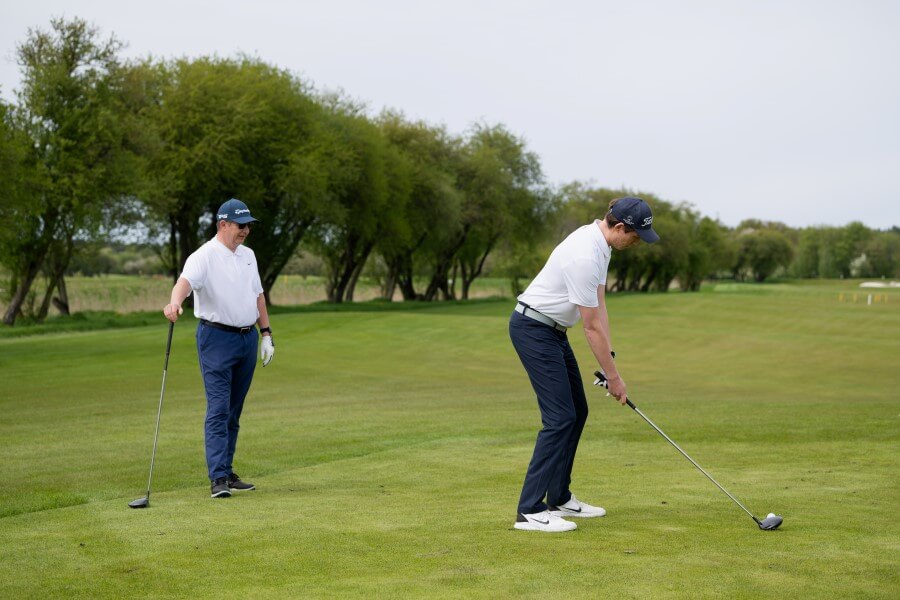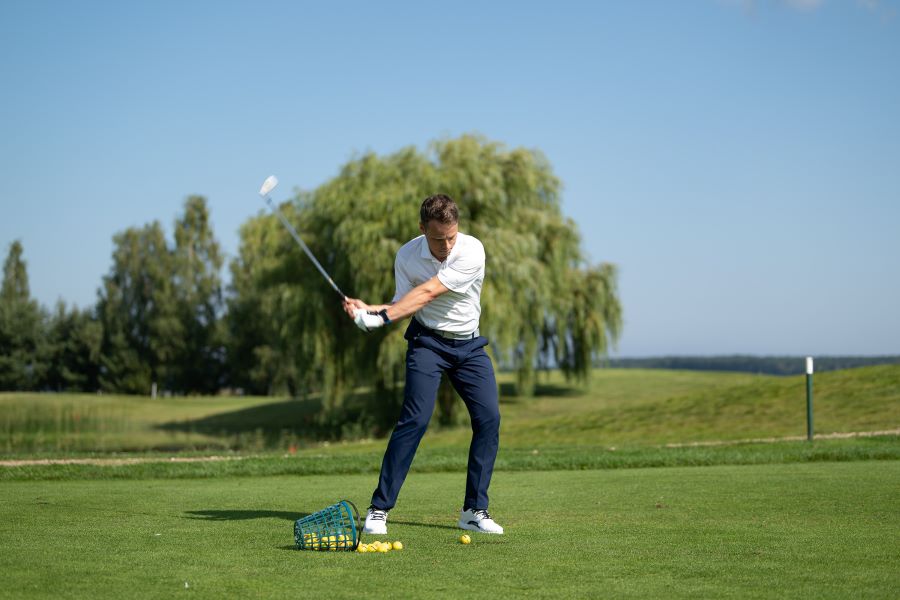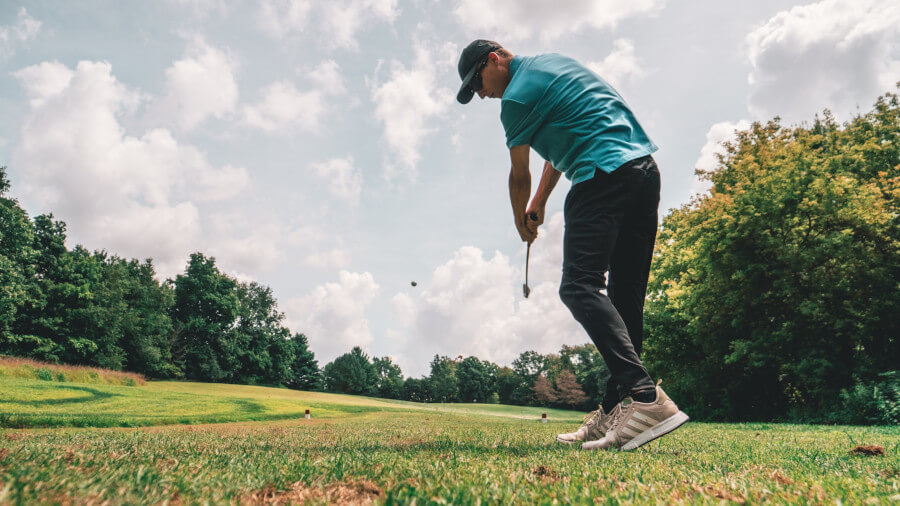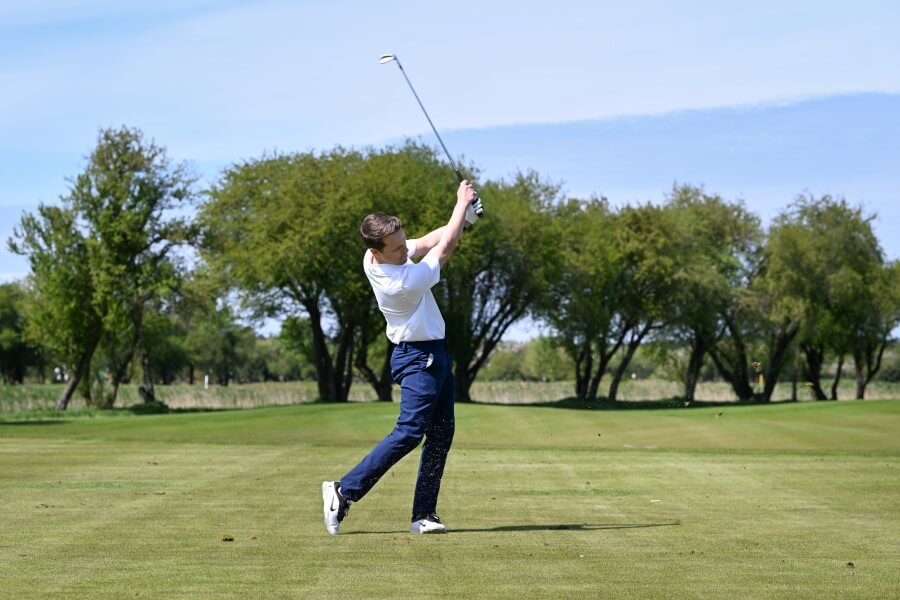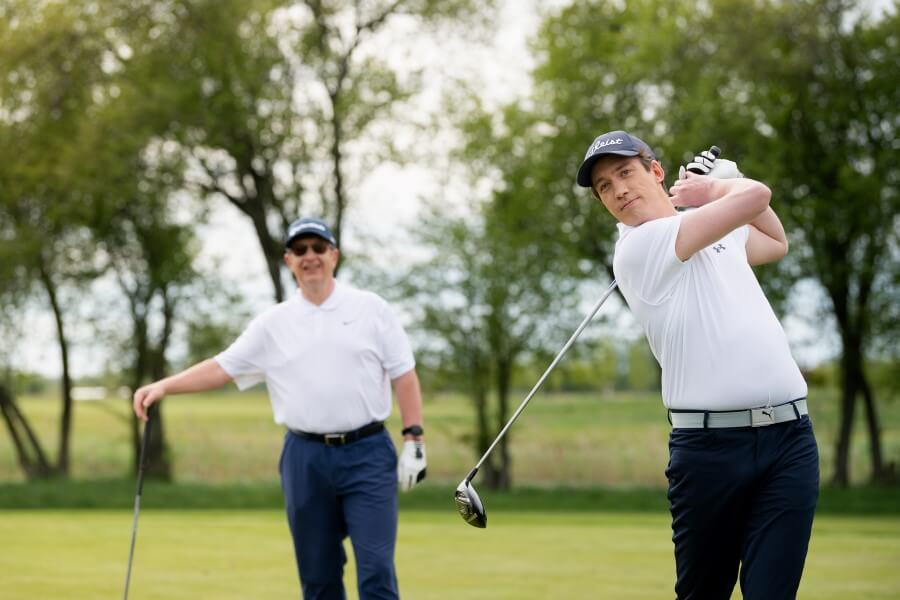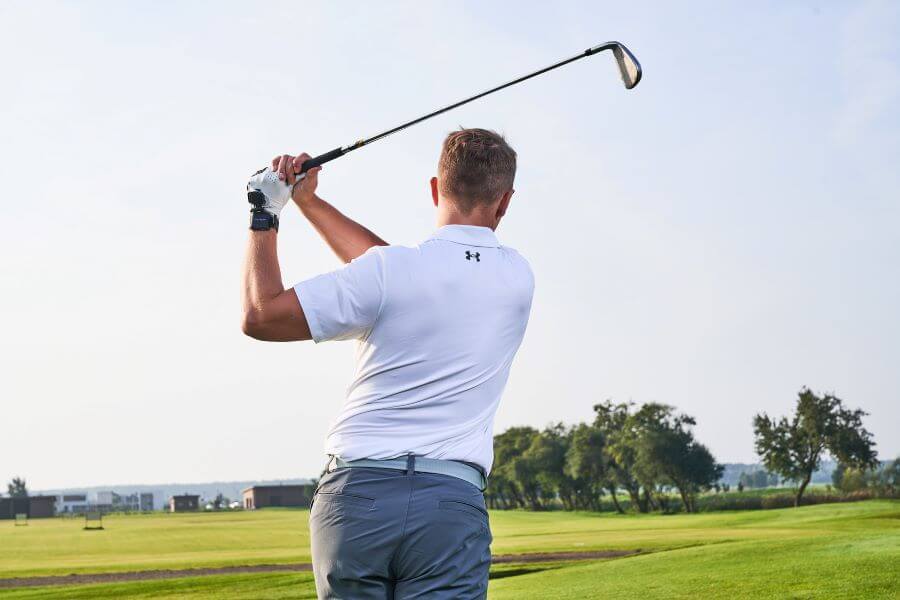8 Effective Ways to Get More Power in the Golf Swing
Do you ever take great golf swings and feel like you just aren’t getting the distance you should?
Lack of power is a major problem for many amateur golfers. Most just assume their swing speed is not high enough to generate power. This is not always the case.
We’ve put together the best ways to get more power in the golf swing and some drills to help you get it done.
Getting More Power in the Golf Swing (Key Takeaways)
If you don’t have time to read the entire guide on how to get more power in the golf swing, here are the most important takeaways.
- The ground is your friend; ground forces have revolutionized the way golfers get power; don’t just stand on the ground, push against it.
- The proper grip, typically a neutral interlock grip, can give you a little extra clubhead speed when you need more power.
- Wrist action and wrist control will give you more power; measuring your wrist angles and then tweaking them is a hidden power secret many golfers are underutilizing.
- Like anything else requiring more power, you must do a physical strength test to ensure you are capable of creating more power.
Contents
8 Ways to Getting More Power in the Golf Swing
These eight ways to increase power in the golf swing will help the majority of golfers elevate their game to the next level. I’ll warn you that when you first start creating more power, you have to adjust the distances of your clubs.
Get ready to start hitting the ball better, but have a few inconsistent rounds of golf. In the end, the changes will be well worth it.
1. Use the Ground
Ground forces are incredibly helpful when it comes to creating power.
For many years, golfers stood on the ground and tried to stay balanced and in control. Times have changed!
The best players in the world are actually pushing down and into the ground as they swing the club back, through impact, and to the follow-through position. This movement is much different than just trying to stay balanced.
You will really feel this motion as you are coming into the impact position. Instead of just turning through the ball, feel as though your trail leg is pushing off the ground while your lead leg does the same.
The feeling is entirely different for many players, but it works well.
One of my best tips here is to get a golf shoe with a slightly wider base that has a great traction pattern. Having this stability and support can help you feel the best way to utilize ground forces.
Eric Cognoro has a drill called the Rainbow Drill that you can use to learn how to utilize the ground and gain more power.
2. Get a Grip
The best golf grip for generating power is the interlock grip.
I’m not saying you need to change your entire foundation in the game. However, if you feel as though you are struggling with power in any way, it could be because you are not gripping the club correctly to begin with.
The neutral interlock grip gives you just a little more contact with the club, and it holds the hands in place through impact.
Here’s our guide on how to get the perfect grip, including some tour player data we have collected. Some of the most powerful golfers in the game (Tiger Woods, Brooks, and Bryson) all use the interlock golf grip.
3. Flexed Wrist Position at Impact
After analyzing more than 1,000,000 golf swings, we’ve learned quite a bit about the proper wrist positions in the game of golf.
One of the things that is universal throughout the entire group is a slightly flexed wrist position at impact.
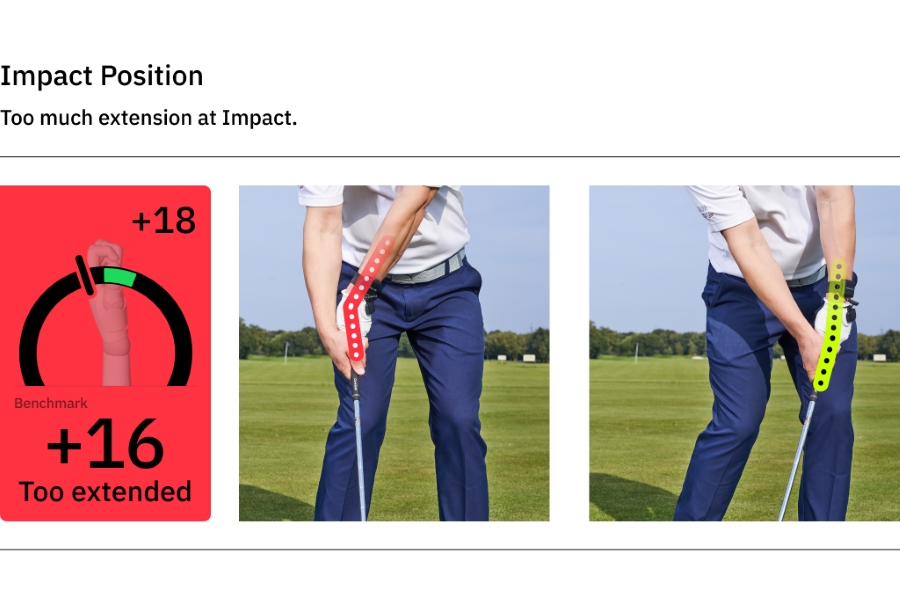
The lead wrist can either be extended, neutral, or flexed at impact. When the lead wrist is flexed, the clubface is generally square, and the golf club is headed on a downward angle of descent through the golf ball.
A flexed position at impact is easiest to achieve when you are at a slightly flexed or flat position at the top of the backswing.
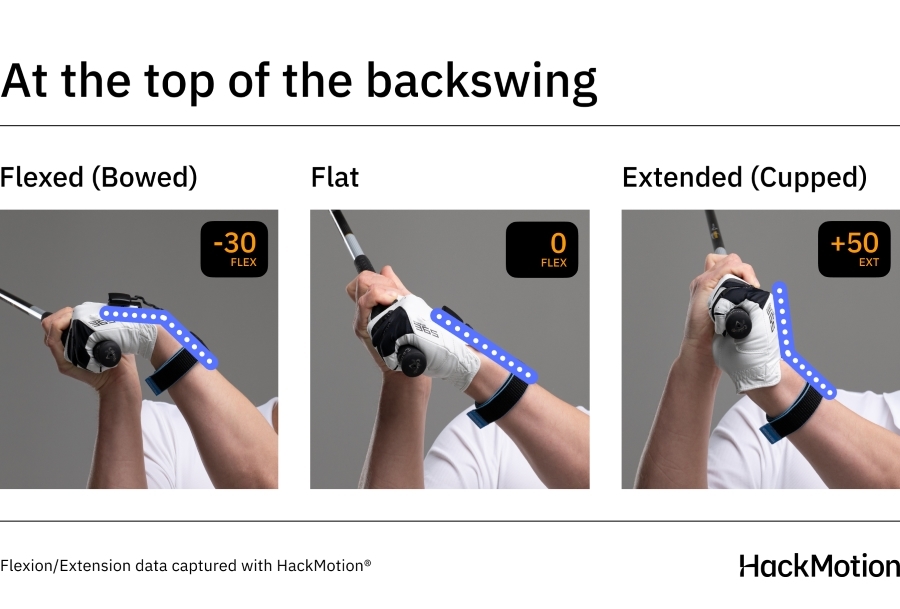
Wear your HackMotion sensor and hit about 20 golf balls. Take a look at how flexed your lead wrist position is at impact.
For most golfers, the lead wrist is extended, causing somewhat of a flip-type shot and a golf ball that travels inconsistent distances with a loss of power.
4. Widen Your Stance
Golfers have traditionally adhered to the concept of feet being shoulder-width apart for all golf clubs in the bag.
However, if you look at the professionals, you can see that they are moving to a slightly wider stance when they need power.
Now, before you head out to the range and start standing with your feet as far apart as you can. I have to remind you of the fact that small adjustments are always better in golf.
First, stand with your feet shoulder-width apart, and then increase the distance slightly. The problem with too wide of a stance is that you can slow your turn down or even restrict the amount of turn.
When your stance is perfect, learn to shift your weight and rotate proper.
5. Create Lag
Lag is that feeling you get when your body and hands have turned through the golf ball, but the club is still dragging behind.
The lag you create in your golf swing is powerful, and it’s going to help you hit the golf ball further. Most players stay hyper-focused on the mechanics of their swing, and they forget the importance of lag.
In addition, some players start to cast the club from the top and lose any lag they had built up.
Try using the HackMotion Casting Drill in the app (seen below) to improve your lag.
6. Flexed Wrist Position at the Top with More Body Rotation
At the top of your backswing, the wrist position for your lead wrist will either be flat, flexed, or extended.
With the data we have collected from HackMotion through the years, we know that the golfers with the more flexed wrist position at the top of their backswing are those who have an easier time generating power through impact.
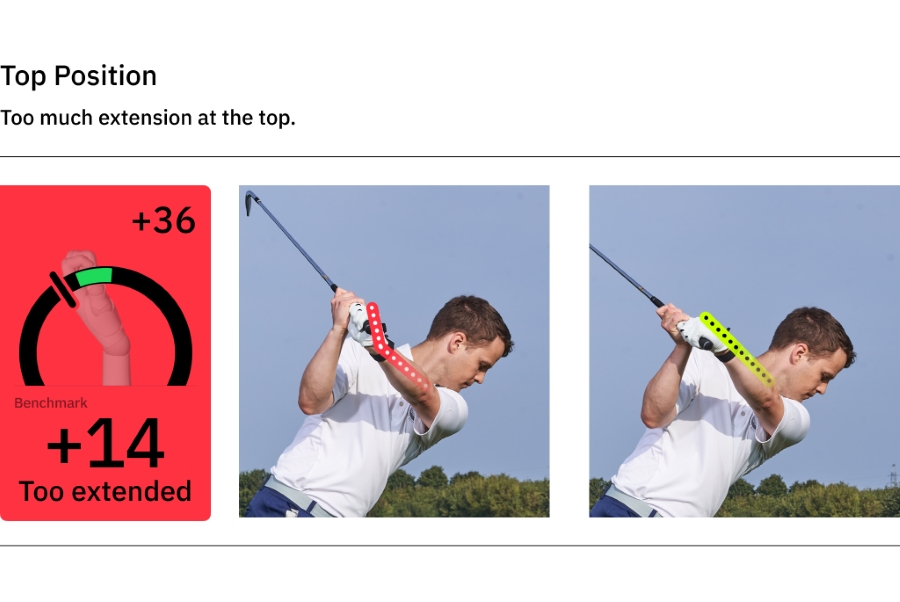
If you need a perfect example of this, take a look at Dustin Johnson. At the top of Dustin’s backswing, we see that his lead wrist is moved into a state of flexion (you could also say it’s bowed).
From this position, his clubface is square to slightly closed, and all he has to do is fire his hips through the ball and rotate as fast as he can through impact.
7. Increase Physical Strength
Physical strength is important. You don’t have to be the strongest person in the world to play great golf, but the better your physical condition is, the easier it is to create power.
When you are in good golf shape, you can improve the interaction you have with the ground, increase speed, hit sharper shots, and feel less fatigued as you come down the 18th hole.
Golfers in better shape get more power.
If you sometimes make a turn and start to slow down or make mistakes, it could simply be that your body is getting tired. Here are a few of the basics you can start on to help gain some more power.
- Start walking at least every day to build up stamina.
- Try to walk at a brisk pace when off the golf course to increase overall leg strength.
- Find a fitness instructor or program that understands how to strengthen specific golf muscles.
- Always remember to stretch and work on mobility as a way to increase your power.
8. Better Shoulder Turn
Shoulder turn in golf is often underutilized when it comes to the amateur golf game. If you want to gain more power in your game, get a full shoulder turn.
Work on this by taking your lead shoulder and ensuring that as you swing back, it is making its way fully under your chin.
Again, I would work on this with the driver, as it feels more natural with a longer golf club. Your wedge shots may not need quite as much of the shoulder turn in order to feel powerful, but with the driver, it’s essential.
This video from Athletic Motion Golf goes through the importance of this larger and more powerful shoulder turn used to increase power.
Drills to Get More Power in the Golf Swing
Now that you know what to work on, here are a few drills that can help you get further along in this process and generate some additional power in the golf swing.
Motorcycle Drill
With the Motorcycle Drill, you will flex your wrists in the downswing to ensure you have more flexion at impact than you did at setup.
The number one reason golfers slice and hit inconsistent shots is an open clubface angle at impact; the motorcycle drill can fix that.
Motorcycle Drill – Master Wrist Flexion in the Downswing
Focus on continuously adding flexion until the club reaches parallel, then smoothly complete your swing.
HackMotion Motorcycle Drill – Step by Step:
- Set Up: Address the ball as usual.
- Downswing Flexion: As you begin your downswing, gradually add wrist flexion so that by the time the club is parallel to the ground (P6), you’ve achieved your desired wrist bend.
- Continue to Impact: Maintain that flexion into impact, then release naturally through the finish.
- Experiment with Speed: Start slowly, then increase speed while retaining proper angles.
- Practice while hitting golf balls but also work on this drill by completing the motion and not hitting shots.
- Find your “just right” amount of flexion—too little or too much can cause mishits.
Casting Drill
Early casting (throwing the club from the top) is a power killer. Many amateurs mistakenly believe it adds power, but in reality, it disrupts sequencing and results in weaker contact.
This drill trains a proper kinematic sequence by allowing the lower body to start while the arms and wrists “lag” behind to store power.
Fix Your Casting with HackMotion
Train to fix casting by generating power with your core and lower body.
HackMotion Casting Drill – Step by Step:
- Slow Rehearsals: Make a normal backswing, then begin the downswing by shifting your weight left and rotating your hips. Focus on not pulling down with your arms.
- Maintain Trail Wrist Bend: Check your HackMotion trail wrist data. Keep the trail wrist extended (bent) as you initiate the downswing, avoiding an early “throw” of the club.
- Arms Follow: Let the arms drop naturally; the club should “lag” behind your hands. This maintains stored power and prevents an over-the-top cast.
- Progressive Speed: Start slowly, gradually building up speed in your downswing. Keep monitoring your wrist angles, looking for late release (not early cast).
HackMotion Tip: If your trail wrist extension “straightens” too soon in the downswing graph, you’re casting.
Faldo Drill
If you tend to overswing or lose control at the top, this drill teaches you to reach a proper top-of-swing position with the right amount of wrist hinge and body rotation.
By presetting the hinge early, you build a more compact, repeatable backswing and eliminate extra arm movement.
HackMotion Faldo Drill
Reach a solid Top position with just the right amount of wrist hinge.
HackMotion Faldo Drill – Step by Step:
- Preset Wrist Hinge: At address, begin your swing by lifting the club until it’s parallel to the ground without moving your hands. This should create about 90° of wrist hinge. HackMotion will confirm if your wrist angles are in the correct range.
- Turn the Shoulders: From this hinged position, complete your backswing using only your shoulder rotation.
- Avoid Overswinging: Don’t let your arms or wrists travel beyond this top position. The goal is a compact, efficient top of the swing.
- Gradual Reps: Start slow to build awareness of the new sequencing. Once the motion feels comfortable, increase speed while checking your wrist hinge with HackMotion.
HackMotion Tip: Watch your wrist flexion/extension at the top. If you’re overhinging or losing structure, the numbers will show it.
Final Thoughts
At this point, you should feel more confident about your ability to gain some power in your golf swing. Clubhead speed is important, and some golfers just move immediately, trying to swing the club harder. Don’t fall into this trap.
Instead, work on getting your body and your golf club into the proper positions. When you do this, there isn’t much work to do, but you will notice the increase in power almost immediately.
Use HackMotion to help you analyze your wrist angles at the top of your swing and then again at impact. Moving toward flexion will be a more powerful option.





